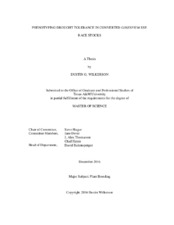| dc.description.abstract | In cotton (Gossypium hirsutum), plant breeders seek means to reduce susceptibility to drought conditions through the incorporation of drought tolerance traits from exotic sources. A group of converted race stocks was phenotyped using high throughput techniques for traits that confer drought tolerance in order to characterize the variation among them and to determine the most advantageous growth stage for evaluating drought tolerance in terms of lint yield and fiber quality. Ten converted race stocks, two released cultivars, and two experimental elite lines were planted in three locations during 2015 and two locations in 2016 in a replicated field trial. Additionally, two high yielding strains were hybridized with four converted race stocks in a factorial mating design. Normalized Difference Vegetation Index, leaf surface temperature, stomatal conductance, and absolute chlorophyll content measurements were collected during the developmental stages of squaring, flowering, and boll development. Spearman’s correlations were constructed and analyzed between lint yield, lint percent, micronaire, fiber length and strength and the drought tolerance traits for each growth stage while additive and dominance variation was calculated within the factorial mating design.
NDVI, leaf surface temperature and chlorophyll content showed a positive association with lint yield and lint percent during flowering while stomatal conductance showed association with lint yield and lint percent during boll development. Changes in fiber micronaire were closely related to differences with drought related effects during boll development while fiber length and strength seemed to be affected by drought effects during flowering. Results of the factorial mating design study showed additive variation for leaf surface temperature, chlorophyll content and stomatal conductance while dominance variation exists for NDVI. The results of this study demonstrate potential within converted race stocks for traits that confer drought tolerance. | en |


